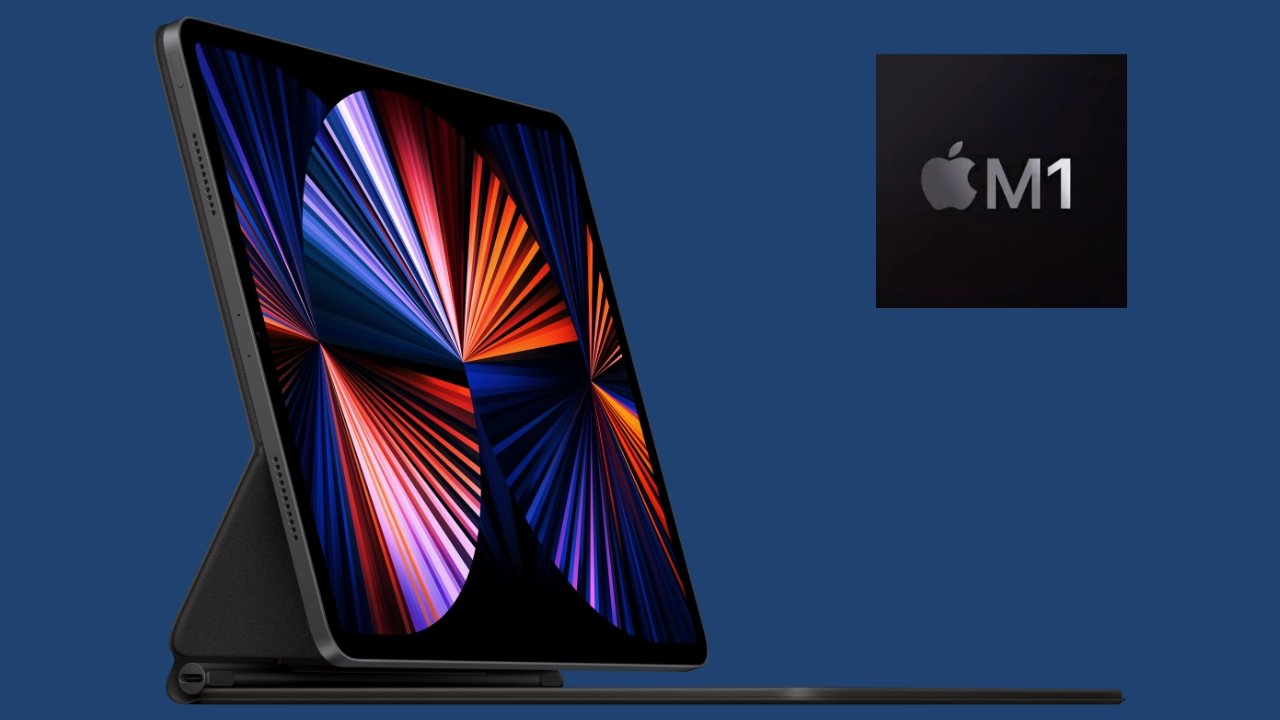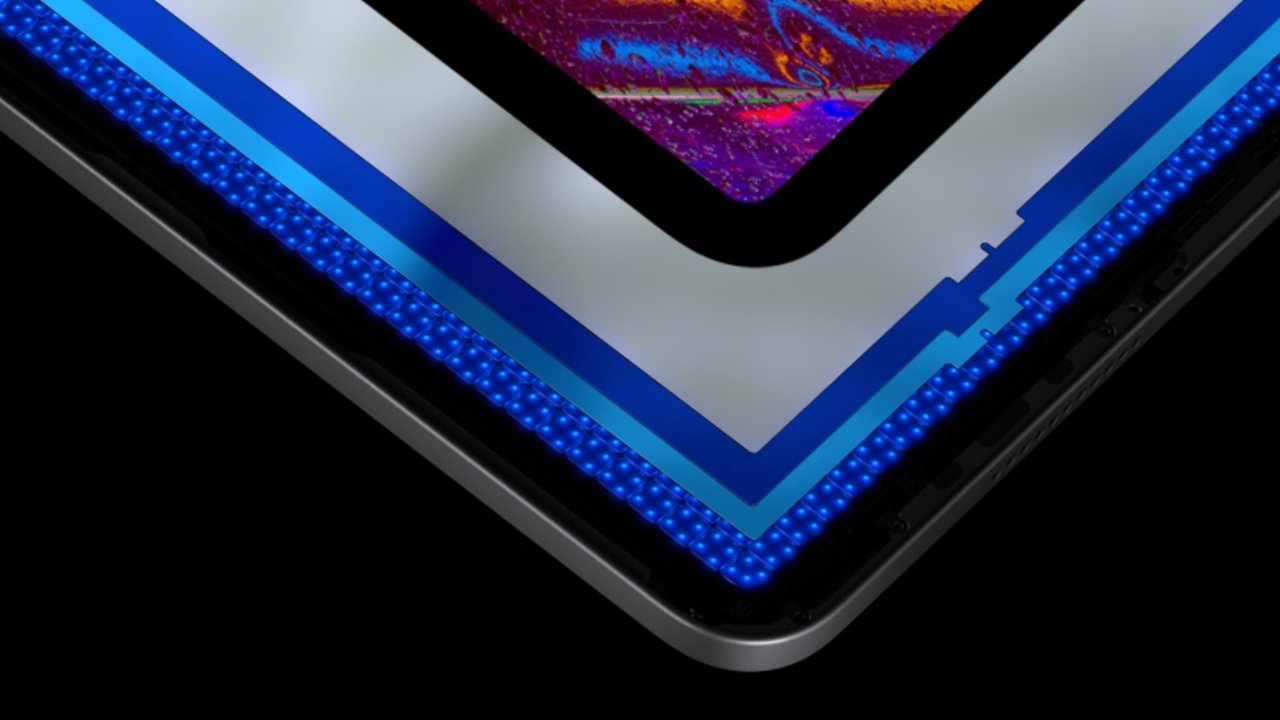Apple engineers dish on no macOS for iPad & why 11-inch model didn't get mini-LED
Two Apple employees sat down for an interview detailing decisions behind the iPad Pro with M1, engineering challenges of the device, and why macOS isn't coming to iPad.

The iPad Pro with M1
The new iPad Pro with M1 processor and Liquid Retina XDR display is now available to customers. The powerful processor has lead to many questions about the future of Apple's tablet line and the state of software on the platform.
A member of the Apple display engineering team, Vincent Gu, and iPad Product Marketing, Scott Broderick, sat down with Brian Tong for an interview on his video podcast. The interview rehashed many of the talking points and specs for the iPad Pro, but there were a few new pieces of information shared about the product's development.
When asked about the mini-LED display, Gu says it required a "whole new level of engineering." Apple couldn't just slap a mini-LED backlight behind its LED display and expect it to work effortlessly. Gu described it as an optics challenge; the technology to synchronize the mini-LED with the display didn't exist and had to be invented from scratch.
These challenges are part of the reason why the 11-inch iPad Pro didn't receive the display. Broderick says that the 12.9-inch iPad Pro users expect the best technology and the best display possible, so that was the product chosen for the new display. The 12.9-inch iPad Pro is a half-millimeter thicker due to the inclusion of the mini-LED display, Broderick confirmed.
The 11-inch iPad Pro users are more concerned over the size and weight of the device, the engineers said, and that had to be considered. Beyond other technological restrictions and size constraints, keeping that one-pound tablet the same size and shape were paramount.
Development of the iPad Pro with the M1 processor, Thunderbolt port, and software considerations was an all-hands effort. Getting the display to work was a combined effort of the display team, the iPadOS team, and the M1 team all at once.

Bringing min-LED to the 12.9-inch iPad Pro was an engineering feat
According to Broderick, if the iPad Pro is to be a powerful machine for HDR content development, the display and port both play an important part. Connecting peripherals like powerful external displays or fast Thunderbolt hard drives are a part of the creative process, so iPad Pro needed a powerful Thunderbolt port.
Gu and Broderick couldn't comment on future software or other plans for the product. They referenced the apps taking advantage of the unique technology that the iPad has to offer, like Adobe using Apple Pencil or Procreate using LiDAR for 3D rendering.
Tong asked if there was any consideration of running Boot Camp or macOS on the iPad Pro since it has a Mac processor.
Broderick responded simply that each platform is unique and distinct and will remain so. The iPad is touch first, has cameras and accessories, and apps that leverage that. The Mac is designed with the mouse and keyboard at the center of its interaction, and the apps reflect that.
Broderick added that the iPad and Mac will remain distinct, but Apple also wants to emphasize how the products work together. Using Continuity or features like SideCar will make these devices even more powerful in tandem.
The 12.9-inch iPad Pro with a mini-LED display is available to purchase now starting at $1,099. The 11-inch iPad Pro may not have the new display, but it still has the M1 processor and starts at $799.
Stay on top of all Apple news right from your HomePod. Say, "Hey, Siri, play AppleInsider," and you'll get the latest AppleInsider Podcast. Or ask your HomePod mini for "AppleInsider Daily" instead and you'll hear a fast update direct from our news team. And, if you're interested in Apple-centric home automation, say "Hey, Siri, play HomeKit Insider," and you'll be listening to our newest specialized podcast in moments.

The iPad Pro with M1
The new iPad Pro with M1 processor and Liquid Retina XDR display is now available to customers. The powerful processor has lead to many questions about the future of Apple's tablet line and the state of software on the platform.
A member of the Apple display engineering team, Vincent Gu, and iPad Product Marketing, Scott Broderick, sat down with Brian Tong for an interview on his video podcast. The interview rehashed many of the talking points and specs for the iPad Pro, but there were a few new pieces of information shared about the product's development.
When asked about the mini-LED display, Gu says it required a "whole new level of engineering." Apple couldn't just slap a mini-LED backlight behind its LED display and expect it to work effortlessly. Gu described it as an optics challenge; the technology to synchronize the mini-LED with the display didn't exist and had to be invented from scratch.
These challenges are part of the reason why the 11-inch iPad Pro didn't receive the display. Broderick says that the 12.9-inch iPad Pro users expect the best technology and the best display possible, so that was the product chosen for the new display. The 12.9-inch iPad Pro is a half-millimeter thicker due to the inclusion of the mini-LED display, Broderick confirmed.
The 11-inch iPad Pro users are more concerned over the size and weight of the device, the engineers said, and that had to be considered. Beyond other technological restrictions and size constraints, keeping that one-pound tablet the same size and shape were paramount.
Development of the iPad Pro with the M1 processor, Thunderbolt port, and software considerations was an all-hands effort. Getting the display to work was a combined effort of the display team, the iPadOS team, and the M1 team all at once.

Bringing min-LED to the 12.9-inch iPad Pro was an engineering feat
According to Broderick, if the iPad Pro is to be a powerful machine for HDR content development, the display and port both play an important part. Connecting peripherals like powerful external displays or fast Thunderbolt hard drives are a part of the creative process, so iPad Pro needed a powerful Thunderbolt port.
Gu and Broderick couldn't comment on future software or other plans for the product. They referenced the apps taking advantage of the unique technology that the iPad has to offer, like Adobe using Apple Pencil or Procreate using LiDAR for 3D rendering.
Tong asked if there was any consideration of running Boot Camp or macOS on the iPad Pro since it has a Mac processor.
Broderick responded simply that each platform is unique and distinct and will remain so. The iPad is touch first, has cameras and accessories, and apps that leverage that. The Mac is designed with the mouse and keyboard at the center of its interaction, and the apps reflect that.
Broderick added that the iPad and Mac will remain distinct, but Apple also wants to emphasize how the products work together. Using Continuity or features like SideCar will make these devices even more powerful in tandem.
The 12.9-inch iPad Pro with a mini-LED display is available to purchase now starting at $1,099. The 11-inch iPad Pro may not have the new display, but it still has the M1 processor and starts at $799.
Stay on top of all Apple news right from your HomePod. Say, "Hey, Siri, play AppleInsider," and you'll get the latest AppleInsider Podcast. Or ask your HomePod mini for "AppleInsider Daily" instead and you'll hear a fast update direct from our news team. And, if you're interested in Apple-centric home automation, say "Hey, Siri, play HomeKit Insider," and you'll be listening to our newest specialized podcast in moments.

Comments
But yeah, the rationale for separating them is valid.
I just wish Sidecar allowed me to "click a mouse button and move a mouse pointer with my finger." That would minimize the need to run macOS apps on iOS. But nobody even asks Apple why they won't allow that.
/s
Around midway through the video, my doorbell rings and the UPS delivery man handed me my brand new M1 iPad Pro 11", 6 days before the expected delivery date.
Now back to topic. I don't think we will get MacOS on the iPad but I do expect some more loosening of the strings come WWDC time. We'll just have to wait.
As for the last question, BT asked them about what color they would've preferred? I would've snapped up "forest green" in an instant. It's the color of the leather case I wanted for my iPhone XS but never came back in stock.
Maybe I'm being naive here, but why can't apple continue to advance the iPad system software and let the developers make apps? What exactly about iPadOS is really the cripple (besides single user, crappy file structure, no time machine, etc)? Or Is it because X application doesn't run on iPadOS? If the latter, doesn't that mean it is up to the developer to make one? For me, I'm about to go all in on iPadPro, replacing my slightly aging 2007 17-inch MBP with the 12.9 2021 "lensflare" model. I don't think there is much that I can't do on the iPadPro that I can do on a Mac productivity-wise. Perhaps there are necessary work-arounds. Is there a list somewhere that compellingly lays out why MacOS is better than iPadOS, and these things would be solved by porting MacOS to iPadPro without losses of the iPadOS benefits?
Apple has been successful. They seem quite expert in satisfying their market. That market may not include you, but I think they're okay with that.
and it is ipadOS that is holding iPad back. It could be fixed with code.